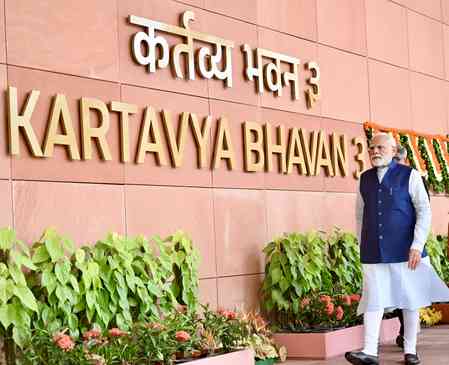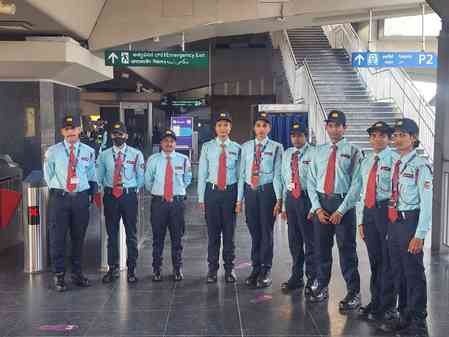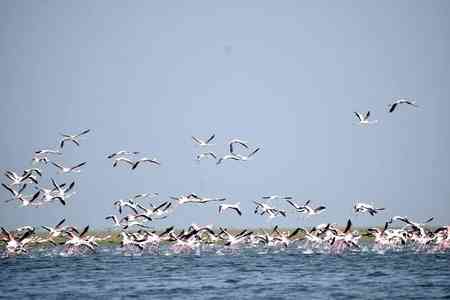“WATER” – THE FUTURE LIFELINE OF THE UNIVERSE
Global warming and natural calamities have led to unpredictable weather patterns, resulting in flash floods caused by cloudbursts or excessive rainfall, creating widespread havoc and destruction. At other times, deficient rainfall sparks fear among residents, as dam reservoirs may not reach expected levels. This shortage can directly impact electricity generation, which depends on adequate water levels in these reservoirs.

By Rajat Kumar Mohindru, Journalist, Jalandhar City
Global warming and natural calamities have led to unpredictable weather patterns, resulting in flash floods caused by cloudbursts or excessive rainfall, creating widespread havoc and destruction. At other times, deficient rainfall sparks fear among residents, as dam reservoirs may not reach expected levels. This shortage can directly impact electricity generation, which depends on adequate water levels in these reservoirs.
Interestingly, during winter, flocks of migratory birds arrive at wetlands from various countries, attracting tourists to dam reservoirs and offering a unique opportunity to enjoy the beauty of nature.
Before independence, Punjab stretched from the Khyber Pass to Delhi and was known as the land of five rivers—Sutlej, Beas, Ravi, Jhelum, and Chenab. Additionally, the Indus River passed through Ladakh. After the partition, River Beas and Sutlej flowed into Pakistan via Hussainwala; Ravi entered from near Madhopur (Punjab); and Chenab and Jhelum passed from the outskirts of the Kashmir Valley into Pakistan.
Recently, after the tragic Pahalgam incident involving the killing of innocents by militants from a particular community, the Indian Government put the Indus Water Treaty on hold. Borders with Pakistan were sealed, and the movement of commodity-carrying vehicles was halted.
The Bhakra Dam was constructed on the Sutlej River, followed by the Nangal Dam downstream. The Bhakra Main Line was built to distribute water from the Nangal Dam to Punjab and Haryana. Simultaneously, the Anandpur Sahib Hydel Canal was constructed to generate electricity. Similarly, the Ropar Headworks led to the development of the Sirhind Canal, which provides water for irrigation and drinking in the Malwa and Haryana regions.
On the Beas River, the Pong Dam was built, followed by the Shah Nehar Barrage, which feeds the Shah Nehar Canal and its extension, providing irrigation water to the Kandi area. The Mukerian Hydel Channel supports power generation, while a few cusecs of water are released from the village of Terkian into the Holy Bein, which flows toward Sultanpur Lodhi.
Both the Sutlej and Beas rivers merge at Harike Pattan, from where the Rajasthan Feeder Canal (also known as the Indira Gandhi Canal) supplies drinking and irrigation water to Rajasthan. From Hussainwala, the Eastern Canal, called the Bikaner Canal, carries water to parts of Malwa and Rajasthan.
In Himachal Pradesh, the Chamera Dam was built on the Ravi River, and the Ranjit Sagar Dam at Shahpur Kandi (along with a barrage) feeds water to Madhopur. From there, canals irrigate the Majha region, mainly through the Upper Bari Doab Canal (UBDC). The waters of the Jhelum and Chenab rivers still flow in large quantities into Pakistan. With the suspension of the Indus Water Treaty, the future of this water sharing remains a matter for the Government of India to decide.
In the 1990s, due to the Rajasthan Feeder, some areas of Malwa faced waterlogging, which harmed agriculture by bringing the groundwater table to the surface and making land infertile. The Punjab government implemented techniques to reduce the water table and restore agricultural productivity. Deep tubewells also helped convert barren land into fertile fields, especially in the Kandi belt.
Recently, Krishan Kumar, Principal Secretary, Punjab Water Resources and Finance, has taken several commendable steps to restore irrigation through canal systems. He has ensured canal cleaning up to the tail ends and is also working on expanding irrigation coverage by building new chambers and laying pipelines. The remodeling and cleaning of canals and tributaries are being carried out on a war footing.
We must save every drop of water. With the increasing focus on canal-based irrigation in agriculture, the demand for water will rise. Punjab may soon require more water than allocated under current quotas. Strategic and sustainable water management is the need of the hour.
(Views are personal)


 Rajat Kumar
Rajat Kumar 










